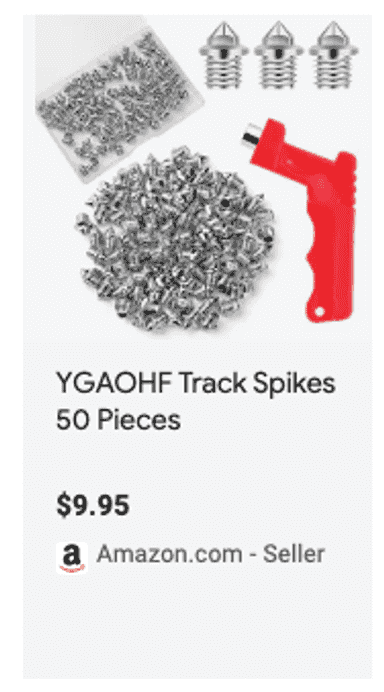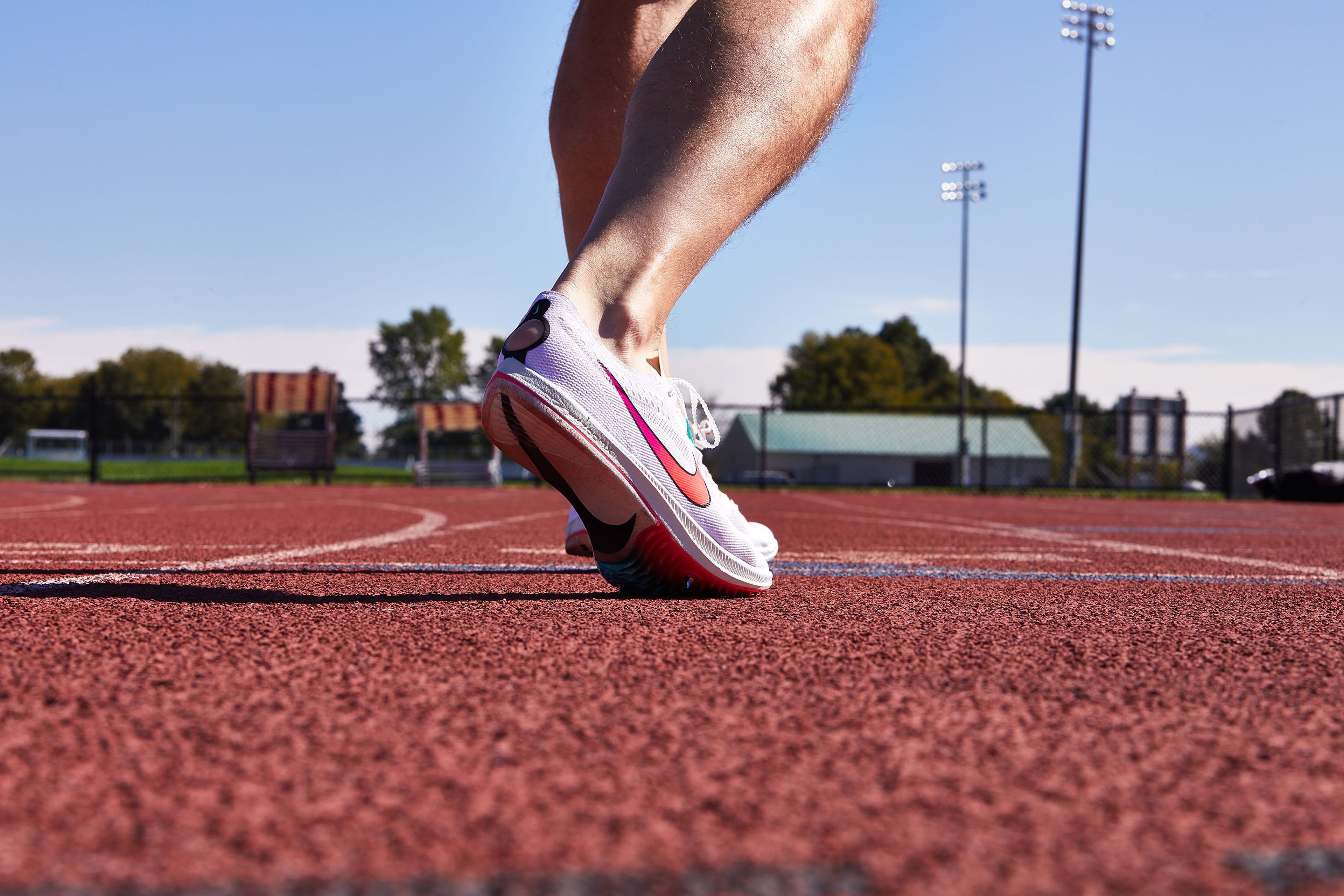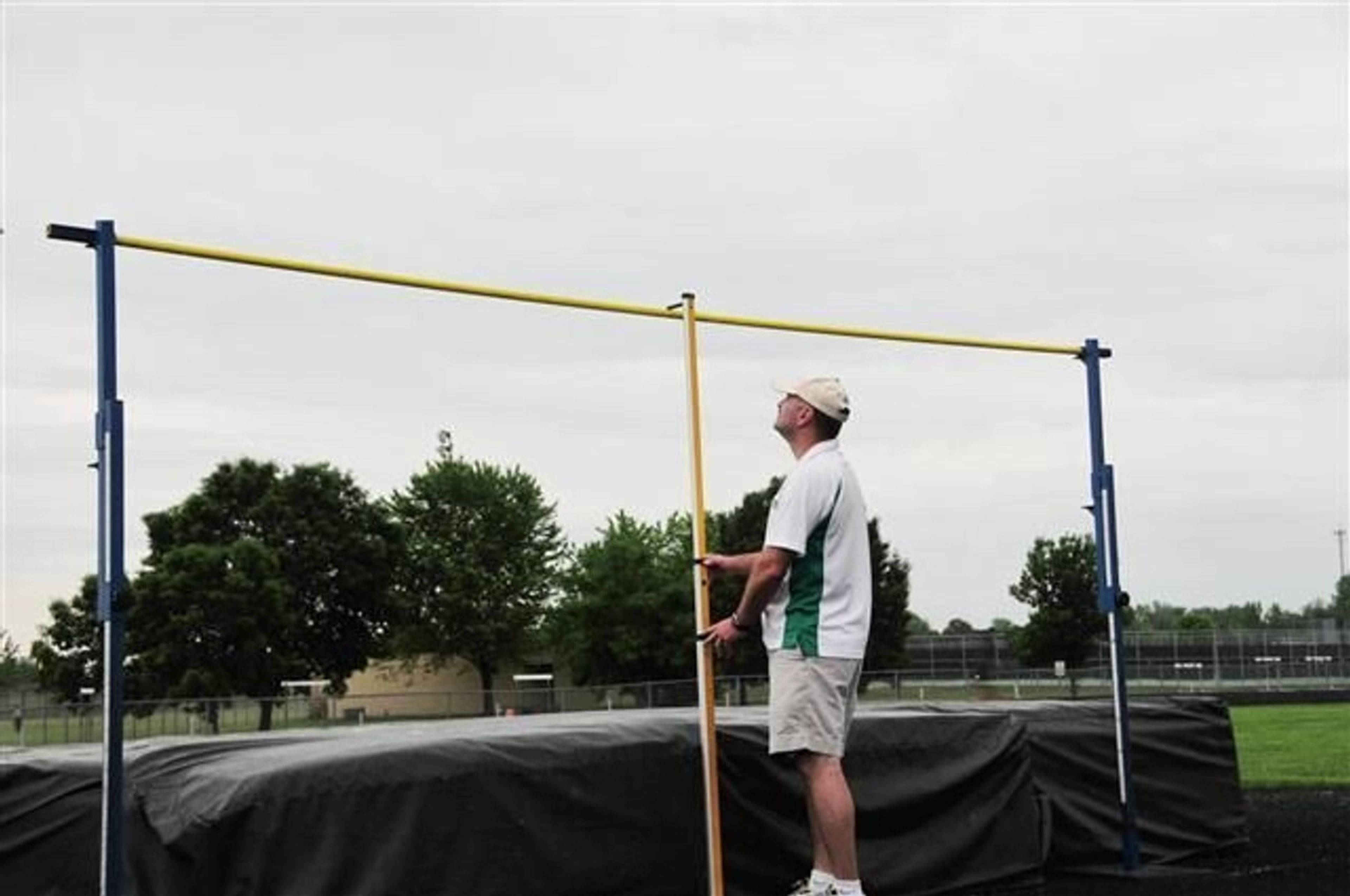Replacing spikes on track shoes: The Ultimate Guide
Learn everything about replacing spikes on track shoes. The best spike types, shoe selection, and maintenance tips to enhance your racing edge.
For athletes in track and field, having the right track shoes with fresh spikes is esential. There's something about the processing of tightening fresh spikes, and then feeling them on your feet. You can't beat that!
From sprinting to middle-distance running and cross-country, track spikes play a significant role in providing traction, stability, and speed. This guide will delve into everything you need to know about replacing spikes on track shoes, choosing the right type, and selecting the appropriate track shoes based on event type and surface. Let’s jump into the world of track spikes and shoes to ensure you’re prepared to hit the ground running—literally!
Can You Replace Spikes on Track Shoes?
Track spikes wear down over time, especially if you frequently run on hard surfaces or walk around on asphalt or concrete. Fresh spikes provide better traction, grip, and performance, which can make a substantial difference in your race results. Here are some key reasons for replacing spikes regularly:
Wear and Tear: Spikes dull quickly when used on hard or rough surfaces, like concrete, diminishing their effectiveness on the track.
Enhanced Performance: Fresh spikes allow for better grip and speed, crucial for any athlete aiming for peak performance.
Surface Adaptation: Different track surfaces require specific types of spikes to optimize performance, grip, and longevity.
In high-level meets, like Nike Nationals or NCAA competitions, athletes must comply with strict spike regulations, which often dictate specific types and lengths of spikes allowed. Swapping in fresh spikes that meet these guidelines ensures compliance and maximizes your grip on the track.
Types of Replacement Track Spikes and Their Purposes
Replacement track spikes come in various designs to suit different surfaces and events. The most popular styles are pyramid, needle, Christmas tree, and tartan spikes, each offering unique benefits:
A) Pyramid Spikes
Best For: Cross-country and most standard track surfaces.
Advantages: These spikes provide excellent bounce and traction without damaging the track surface, making them a versatile choice. They’re known for their durability and are particularly useful on softer, granulated rubber tracks common in U.S. high schools.
Size Recommendation: The ¼-inch pyramid spike is a popular choice for indoor facilities, offering stability without being too aggressive.
B) Needle Spikes
Best For: All-weather synthetic tracks.
Advantages: Needle spikes have a pointed design, offering exceptional grip on hard surfaces. However, they may damage softer track materials, making them less versatile for some surfaces.
Size Recommendation: The 3/16-inch needle spike is widely used for hard surfaces, providing a great balance of traction without excessive depth.
C) Omni-Lite Spikes
Best For: Lightweight performance across different track surfaces.
Advantages: Made from ceramic aluminum, Omni-Lite spikes are about two-thirds lighter than traditional steel spikes, which reduces overall weight without sacrificing durability.
Size Recommendation: Choose based on surface type—shorter for hard surfaces and longer for softer tracks.
D) Christmas Tree Spikes
Best For: Tracks that require a balance between bounce and grip.
Advantages: These spikes, known as compression spikes, blend the stability of a pyramid spike with the traction of a needle spike. They’re ideal for athletes who need a versatile option for varying track conditions.
Size Recommendation: Typically available in ¼ inch, providing balanced performance on multiple surfaces.
By choosing the right spike type, you’ll not only protect the track surface but also ensure maximum grip and stability. For example, most U.S. high school tracks have soft, granulated rubber surfaces that accommodate longer spikes for better grip, while hard surfaces like Mondo tracks used in elite meets require shorter or needle spikes for optimal performance.
Selecting the Right Track Shoes for Your Event and Skill Level
Track shoes, like spikes, vary in design and are tailored to specific events. The correct choice of shoes can improve comfort, prevent injury, and boost performance. Here are the primary types of track shoes and some key considerations:
Sprint Spikes
Design: Sprint spikes are extremely lightweight, usually with minimal or no heel, encouraging the runner to stay on their toes for faster forward momentum.
Best For: Sprinters and short-distance runners.
Benefits: With a low heel, sprint spikes allow for explosive toe-off, maximizing speed and power.
Considerations for Beginners: While sprint spikes are optimal for toe running, they can cause injuries, like rolled ankles, if used by inexperienced runners who may not be accustomed to forefoot running. Novices should consider a shoe with a slightly raised heel for added support and stability.
Middle-Distance and Distance Spikes
Design: These spikes are often stiffer and have a fuller sole, providing more cushioning and support than sprint spikes.
Best For: Middle-distance (800m to 1500m) and long-distance (3000m and above) runners.
Benefits: Offering a balance of speed and comfort, these shoes are designed to sustain long periods of running with extra support for the foot.
Recommendation for New Runners: For novices, distance spikes provide a more comfortable option. The additional sole support offers stability, making them safer and less intense for athletes still adapting to running techniques.
Factors to Consider When Selecting Track Spikes and Shoes
Selecting the right spikes and shoes goes beyond just choosing a brand. Here are other factors to keep in mind:
Track Surface: Softer surfaces like those commonly found at high schools can handle longer spikes (like pyramid or Christmas tree) for extra grip. Harder surfaces (e.g., Mondo tracks) often found in professional meets require shorter, less aggressive spikes (e.g., needle or Omni-Lite).
Event Type: Different events demand different shoe types. Sprinters benefit from minimalistic shoes, while middle-distance and distance runners need more cushioned options for comfort and longevity.
Skill Level: Beginners should consider shoes with a prominent heel and additional support. Experienced runners may benefit from ultra-light sprint spikes, though they require specific forefoot running techniques to avoid injury.
How to Replace Spikes on Track Shoes
Replacing spikes on track shoes is simple with the right tools. Most track shoes come with a basic spike key, but these are often made of low-quality materials and can wear out fast. For long-term use, invest in a durable steel spike key, which will make replacing spikes much easier.

Steps for Replacing Track Spikes
Remove Old Spikes:
Insert the spike wrench into the spike hole and twist counterclockwise until it loosens. Remove the spike once it’s fully unscrewed.
Clean the Holes:
Remove any dirt or debris in the spike holes, as these can interfere with threading.
Insert New Spikes:
Insert the new spike and twist clockwise until it feels secure. Avoid overtightening, as this can damage the threading.
Regularly replacing worn-out spikes ensures better grip and protection for both the athlete and the track surface.
When and How Often to Replace Spikes
Frequent use and harsh surfaces can quickly dull your spikes, making them less effective. Here are some general guidelines for when to replace them:
Visual Inspection: If your spikes look worn or dull, it’s time to replace them. Fresh spikes provide superior traction and can help prevent slipping.
After Rough Surfaces: Walking or running on hard surfaces like asphalt and concrete dulls spikes more quickly. Replace them after any extended period on these surfaces.
Before Major Competitions: High-level meets like Nike Nationals or NCAA events have specific regulations for spike types and lengths, which are often shorter for elite tracks. Ensure compliance by replacing spikes before the meet.
Replacement spikes are affordable and widely available on platforms like Amazon or track and field specialty stores, so make regular replacement part of your pre-race routine.
Cost and Availability of Replacement Spikes
Replacement spikes are inexpensive and easy to find. Most sports stores and online retailers offer a variety of spikes suitable for different track surfaces and event types. Regularly replacing spikes is a low-cost way to maintain the best possible performance on the track. Here are some additional tips:
Tools: Use a sturdy steel spike key instead of the basic one that often comes with track shoes. Steel keys last longer and make changing spikes easier.
Maintenance: Keep a few extra spikes and your steel key in your bag. Having these on hand will ensure that you’re prepared to replace worn spikes at any time, especially before big meets.
Final Thoughts
Replacing track spikes is a small but essential part of any runner’s preparation. With the right spikes and shoes for each event and surface, athletes can maximize performance, improve traction, and reduce the risk of injury. Keeping spikes in top shape is easy and cost-effective, especially with the wide availability of replacement options.









